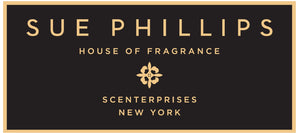This Is The Biggest Trend In Fragrance Right Now
Fragrances weren’t always marketed to men and women specifically. And as new generations welcome and help shape a more fluid world, the fragrance industry is moving right along with it.
History Lesson
In ancient Egypt, perfume was used as a way to honor the gods in religious ceremonies; the Romans and Greeks applied jasmine and scents from other flowers to cover their body odor. “Even in the Bible it said you should put scent on yourself to cover body odor, but there were no stories about gender,” says fifth-generation perfumer Ben Krigler of artisanal fragrance house Krigler.
According to fragrance expert Sue Phillips, founder of The Scentarium, scent was considered universal until 1921 when Chanel launched its now-iconic No5, and Coco Chanel marketed it to women. “This was followed by a slew of other ‘designer fragrances’ that were also marketed to women, such as Dior and Arpège, and suddenly ‘perfume’ became the fragrance name associated with women,” she explains. “The most famous American men’s cologne actually started out as a women’s fragrance under the name of ‘Early American Old Spice,’ but it flopped, so it was re-released as the new ‘Old Spice’ in 1937 and targeted to men, thus began the marketing of ‘colognes’ for men.” In the 1940s and beyond, “fragrance marketing and advertising became sexualized with the focus on attracting men or women in very traditional sexual stereotypical roles,” says Linda Levy, president of The Fragrance Foundation.
Turning Point
In 1994, things changed when Calvin Klein’s CK ONE hit the market with a bang. “CK ONE is a major milestone in fragrance history as it was a disruptor in the industry and the first fragrance to be marketed as unisex, or universal, as we currently have named this category at The Fragrance Foundation,” says Levy. One of the perfumers who created the radical scent, Alberto Morillas, reflects on the game-changing launch: “CK ONE moves beyond old codes of gender, sexuality and race, and embodies the idea of freedom. Calvin Klein anticipated a new cultural shift toward unisex fragrances and codes in its early stages, and leaned in at the right moment. The fragrance has been a best-seller since.”
Modern Minds
Today, there are many fragrances blurring gender norms, which Levy says is truly the current state of society and will be for the future. “These include but are not limited to Le Labo, Tom Ford, diptyque, Byredo, Maison Margiela, Atelier Colonge and Jo Malone, which are widely known. Some brands, such as Boy Smells and the Phluid Project, are making gender fluidity a major statement in their marketing.”
Krigler has also noticed a significant change in consumer behavior as more people are turning to the internet for fragrance education. “I can see it with our younger customers, and even our male customers: there’s less worrying about what is ‘for men,’ and what they can and can’t wear. They’re more interested in the notes and the ingredients, and how they will react with their body chemistry and their lifestyle. Fragrance is personal—it’s not about the latest trend or what marketing tells you is best.”
Love Notes
Regardless of gender, Phillips says “Americans generally like to smell fresh and clean, and those notes are typically found in the citrus family, such as lemons, oranges, bergamot, green grass and ozonic sea breezy notes. It harkens back to Americans’ obsession with cleanliness.” Globally, Krigler points to a desire for people to wear scents that make them feel closer to nature. “Fresh notes like bergamot and orange blossom are very universal, but also notes like patchouli, amber, sandalwood and tonka bean. And vanilla! This is one note everybody is crazy about these days. It’s very addictive and makes you feel comfortable.”
Future Focus
Picture a department store floor without sections for men and women, but rather one big celebration of scent. Experts predict this is the future, but they’re not sure how long it will take to get there. “I believe we’re entering that phase now, in fact,” says Morillas. “Many of the client briefs I receive stipulate a unisex approach to creation, and I find that many of my inspirations and reference points are now genderless, and linked closely to an emotion I’m trying to evoke, rather than using specific ingredients for gender codes. The more accepting a society becomes of discarding stereotypes, the more our narrative as perfumers changes as well.”
Universal Language
Three genderless scents we’re loving right now: one that stands the test of time and two newcomers to the scene this year.
